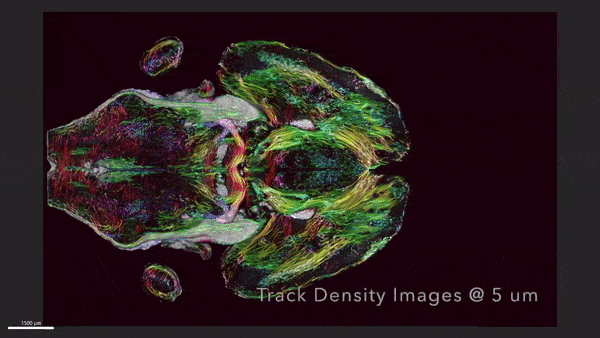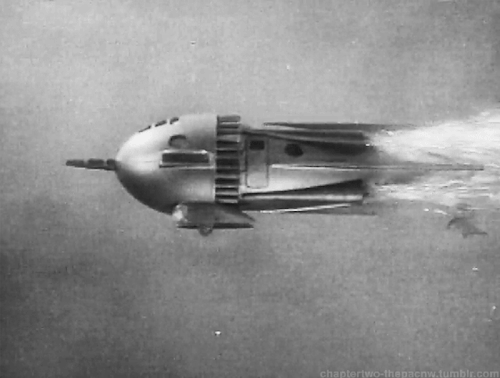New Technology Could Make Missing Important Doses of Medicines and Vaccines a Thing of the Past
The technology developed by Rice Lab has the potential to provide time-released drugs and vaccines for months.
This state-of-the-art technology enables the production of time-release drugs.
... “This is a huge problem in the treatment of chronic disease,” said Kevin McHugh, corresponding author of a study about the technology published online in Advanced Materials. ... Encapsulating medicine in microparticles that dissolve and release drugs over time isn’t a new idea. But McHugh and graduate student Tyler Graf used 21st-century methods to develop next-level encapsulation technology that is far more versatile than its forerunners. ...
... Dubbed PULSED (short for Particles Uniformly Liquified and Sealed to Encapsulate Drugs), the technology employs high-resolution 3D printing and soft lithography to produce arrays of more than 300 nontoxic, biodegradable cylinders that are small enough to be injected with standard hypodermic needles.
The cylinders are made of a polymer called PLGA that’s widely used in clinical medical treatment. McHugh and Graf demonstrated four methods of loading the microcylinders with drugs and showed they could tweak the PLGA recipe to vary how quickly the particles dissolved and released the drugs — from as little as 10 days to almost five weeks. They also developed a fast and easy method for sealing the cylinders, a critical step to demonstrate the technology is both scalable and capable of addressing a major hurdle in time-release drug delivery.
“The thing we’re trying to overcome is ‘first-order release,’” McHugh said, referring to the uneven dosing that’s characteristic with current methods of drug encapsulation. “The common pattern is for a lot of the drug to be released early, on day one. And then on day 10, you might get 10 times less than you got on day one. ... “Most of the time it’s really problematic, either because the day-one dose brings you close to toxicity or because getting 10 times less — or even four or five times less — at later time points isn’t enough to be effective.”
In many cases, it would be ideal for patients to have the same amount of a drug in their systems throughout treatment. McHugh said PULSED can be tailored for that kind of release profile, and it also could be used in other ways. ... [So] we hypothesized that this core-shell structure — where you’d have the vaccine in a pocket inside a biodegradable polymer shell — could both produce that kind of all-or-nothing release event and provide a reliable way to set the delayed timing of the release.”
... Though PULSED hasn’t yet been tested for months-long release delays, McHugh said previous studies from other labs have shown PLGA capsules can be formulated to release drugs as much as six months after injection.
The technology developed by Rice Lab has the potential to provide time-released drugs and vaccines for months.
This state-of-the-art technology enables the production of time-release drugs.
... “This is a huge problem in the treatment of chronic disease,” said Kevin McHugh, corresponding author of a study about the technology published online in Advanced Materials. ... Encapsulating medicine in microparticles that dissolve and release drugs over time isn’t a new idea. But McHugh and graduate student Tyler Graf used 21st-century methods to develop next-level encapsulation technology that is far more versatile than its forerunners. ...
... Dubbed PULSED (short for Particles Uniformly Liquified and Sealed to Encapsulate Drugs), the technology employs high-resolution 3D printing and soft lithography to produce arrays of more than 300 nontoxic, biodegradable cylinders that are small enough to be injected with standard hypodermic needles.
The cylinders are made of a polymer called PLGA that’s widely used in clinical medical treatment. McHugh and Graf demonstrated four methods of loading the microcylinders with drugs and showed they could tweak the PLGA recipe to vary how quickly the particles dissolved and released the drugs — from as little as 10 days to almost five weeks. They also developed a fast and easy method for sealing the cylinders, a critical step to demonstrate the technology is both scalable and capable of addressing a major hurdle in time-release drug delivery.
“The thing we’re trying to overcome is ‘first-order release,’” McHugh said, referring to the uneven dosing that’s characteristic with current methods of drug encapsulation. “The common pattern is for a lot of the drug to be released early, on day one. And then on day 10, you might get 10 times less than you got on day one. ... “Most of the time it’s really problematic, either because the day-one dose brings you close to toxicity or because getting 10 times less — or even four or five times less — at later time points isn’t enough to be effective.”
In many cases, it would be ideal for patients to have the same amount of a drug in their systems throughout treatment. McHugh said PULSED can be tailored for that kind of release profile, and it also could be used in other ways. ... [So] we hypothesized that this core-shell structure — where you’d have the vaccine in a pocket inside a biodegradable polymer shell — could both produce that kind of all-or-nothing release event and provide a reliable way to set the delayed timing of the release.”
... Though PULSED hasn’t yet been tested for months-long release delays, McHugh said previous studies from other labs have shown PLGA capsules can be formulated to release drugs as much as six months after injection.
Transformative Technology for Deep Tissue Monitoring: Wearable Ultrasound Patches
A group of engineers at the University of California San Diego has created a stretchable ultrasonic array that can perform non-invasive, serial 3D imaging of tissues as deep as 4 centimeters below the surface of the human skin. This innovative method boasts a spatial resolution of 0.5 millimeters and offers a more extended, non-invasive solution compared to current techniques, with enhanced penetration depth. ... The elastography monitoring system can provide serial, non-invasive, and three-dimensional mapping of mechanical properties for deep tissues. ... Wearable ultrasound patches accomplish the detection function of traditional ultrasound and also break through the limitations of traditional ultrasound technology, such as one-time testing, testing only within hospitals and the need for staff operation. ... “This new wave of wearable ultrasound technology is driving a transformation in the healthcare monitoring field, improving patient outcomes, reducing healthcare costs and promoting the widespread adoption of point-of-care diagnosis,” said Yuxiang Ma, a visiting student in the Xu group and study coauthor. “As this technology continues to develop, it is likely that we will see even more significant advances in the field of medical imaging and healthcare monitoring.”

A group of engineers at the University of California San Diego has created a stretchable ultrasonic array that can perform non-invasive, serial 3D imaging of tissues as deep as 4 centimeters below the surface of the human skin. This innovative method boasts a spatial resolution of 0.5 millimeters and offers a more extended, non-invasive solution compared to current techniques, with enhanced penetration depth. ... The elastography monitoring system can provide serial, non-invasive, and three-dimensional mapping of mechanical properties for deep tissues. ... Wearable ultrasound patches accomplish the detection function of traditional ultrasound and also break through the limitations of traditional ultrasound technology, such as one-time testing, testing only within hospitals and the need for staff operation. ... “This new wave of wearable ultrasound technology is driving a transformation in the healthcare monitoring field, improving patient outcomes, reducing healthcare costs and promoting the widespread adoption of point-of-care diagnosis,” said Yuxiang Ma, a visiting student in the Xu group and study coauthor. “As this technology continues to develop, it is likely that we will see even more significant advances in the field of medical imaging and healthcare monitoring.”

And some good news on the gene front ...
New Study: Gene Therapy Can Effectively Eliminate HIV Infection
... Gene-editing therapy targeting both HIV-1, the virus responsible for AIDS, and CCR5, the co-receptor assisting viral entry into cells, has been demonstrated to effectively eradicate HIV infection, according to new research from the Lewis Katz School of Medicine at Temple University and the University of Nebraska Medical Center (UNMC). This study, published in the journal Proceedings of the National Academy of Sciences (PNAS), marks the first instance of combining a dual gene-editing approach with antiretroviral medications to successfully cure animals of HIV-1.
“The idea to bring together the excision of HIV-1 DNA with inactivation of CCR5 using gene-editing technology builds on observations from reported cures in human HIV patients,” said Kamel Khalili, Ph.D., Laura H. Carnell Professor and Chair of the Department of Microbiology, Immunology, and Inflammation, Director of the Center for Neurovirology and Gene Editing, and Director of the Comprehensive NeuroAIDS Center at the Lewis Katz School of Medicine. “In the few instances of HIV cures in humans, the patients underwent bone marrow transplantation for leukemia, and the donor cells that were used carried inactivating CCR5 mutations.”
... In previous work, Drs. Khalili and Gendelman and their respective teams showed that HIV can be edited out from the genomes of live, humanized HIV-infected mice, leading to a cure in some animals. For that research, Dr. Khalili and co-investigator, Rafal Kaminski, Ph.D., Assistant Professor at the Center for Neurovirology and Gene Editing at the Katz School of Medicine, combined their expertise in CRISPR gene-editing technology for targeting HIV-1 with a therapeutic strategy known as long-acting slow-effective release (LASER) antiretroviral therapy (ART) ... Despite being able to eliminate HIV in LASER-ART mice, the researchers found that HIV could eventually re-emerge from tissue reservoirs and cause rebound infection. This effect is similar to rebound infection in human patients who have been taking ART but suddenly stop or experience a disruption in treatment. HIV integrates its DNA into the genome of host cells, it can lie dormant in tissue reservoirs for long periods of time, out of reach of antiretroviral drugs. As a consequence, when ART is stopped, HIV replication renews, giving rise to AIDS. ... Experiments in humanized LASER-ART mice carried out by Dr. Gendelman’s team showed that the constructs developed at Temple, when administered together, resulted in viral suppression, restoration of human T-cells, and elimination of replicating HIV-1 in 58 percent of infected animals.
... The new dual CRISPR gene-editing strategy holds exceptional promise for treating HIV in humans. “It is a simple and relatively inexpensive approach,” Dr. Khalili noted. “The type of bone marrow transplant that has brought about cures in humans is reserved for patients who also have leukemia. It requires multiple rounds of radiation and is not applicable in resource-limited regions, where HIV infection tends to be most common.” ...
https://scitechdaily.com/new-study-g...hiv-infection/
... Gene-editing therapy targeting both HIV-1, the virus responsible for AIDS, and CCR5, the co-receptor assisting viral entry into cells, has been demonstrated to effectively eradicate HIV infection, according to new research from the Lewis Katz School of Medicine at Temple University and the University of Nebraska Medical Center (UNMC). This study, published in the journal Proceedings of the National Academy of Sciences (PNAS), marks the first instance of combining a dual gene-editing approach with antiretroviral medications to successfully cure animals of HIV-1.
“The idea to bring together the excision of HIV-1 DNA with inactivation of CCR5 using gene-editing technology builds on observations from reported cures in human HIV patients,” said Kamel Khalili, Ph.D., Laura H. Carnell Professor and Chair of the Department of Microbiology, Immunology, and Inflammation, Director of the Center for Neurovirology and Gene Editing, and Director of the Comprehensive NeuroAIDS Center at the Lewis Katz School of Medicine. “In the few instances of HIV cures in humans, the patients underwent bone marrow transplantation for leukemia, and the donor cells that were used carried inactivating CCR5 mutations.”
... In previous work, Drs. Khalili and Gendelman and their respective teams showed that HIV can be edited out from the genomes of live, humanized HIV-infected mice, leading to a cure in some animals. For that research, Dr. Khalili and co-investigator, Rafal Kaminski, Ph.D., Assistant Professor at the Center for Neurovirology and Gene Editing at the Katz School of Medicine, combined their expertise in CRISPR gene-editing technology for targeting HIV-1 with a therapeutic strategy known as long-acting slow-effective release (LASER) antiretroviral therapy (ART) ... Despite being able to eliminate HIV in LASER-ART mice, the researchers found that HIV could eventually re-emerge from tissue reservoirs and cause rebound infection. This effect is similar to rebound infection in human patients who have been taking ART but suddenly stop or experience a disruption in treatment. HIV integrates its DNA into the genome of host cells, it can lie dormant in tissue reservoirs for long periods of time, out of reach of antiretroviral drugs. As a consequence, when ART is stopped, HIV replication renews, giving rise to AIDS. ... Experiments in humanized LASER-ART mice carried out by Dr. Gendelman’s team showed that the constructs developed at Temple, when administered together, resulted in viral suppression, restoration of human T-cells, and elimination of replicating HIV-1 in 58 percent of infected animals.
... The new dual CRISPR gene-editing strategy holds exceptional promise for treating HIV in humans. “It is a simple and relatively inexpensive approach,” Dr. Khalili noted. “The type of bone marrow transplant that has brought about cures in humans is reserved for patients who also have leukemia. It requires multiple rounds of radiation and is not applicable in resource-limited regions, where HIV infection tends to be most common.” ...
https://scitechdaily.com/new-study-g...hiv-infection/
stlah
























 ) ...
) ...
Leave a comment: